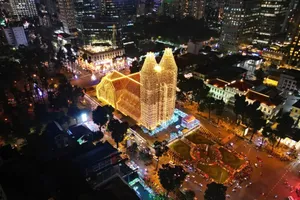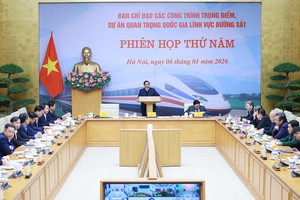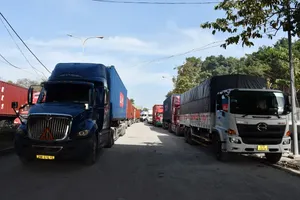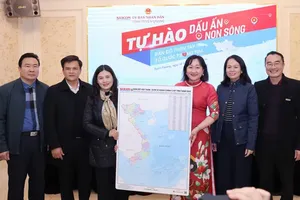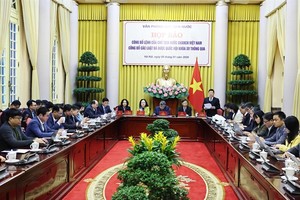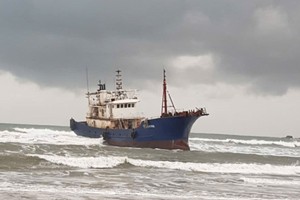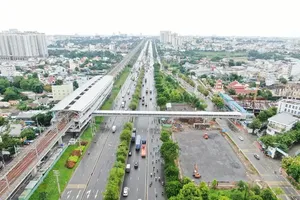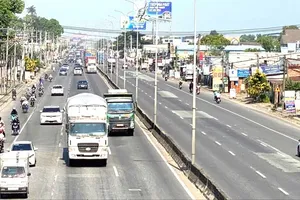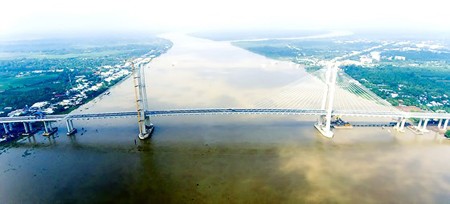
Road traffic awaits connection
According to the Ministry of Transport, since 2010, the Mekong Delta has finished 46 traffic projects, 39 of which are for road traffic, with the total investment of VND76,462 billion (approx. $3,353 million).
Out of the 19 more road traffic projects carried out at the moment, five are using national budget with the total investment of VND2,127 billion ($93.273 million), three are using government bond with VND3,880 billion ($155.2 million), five are using ODA (Official Development Assistance) capital with VND 39,375 billion ($1,575 million), and six are using BOT (build-operate-transfer) capital with VND20,728 billion ($829.12 million).
The finished projects, including Can Tho, Ham Luong, Co Chien, My Loi, Nam Can Bridges, the Ho Chi Minh City – Trung Luong Highway, Quan Lo – Phung Hiep Road, and Southern Hau River Road, are now serving the economic, social, national defense demands for the whole Mekong Delta in particular and for the nation in general.
However, there exist major obstacles that need urgent addressing, the most prominent of which is the Ho Chi Minh City – Can Tho Highway with the total investment capital of nearly VND16,000 billion ($640 million). Despite the urge of citizens and the many meetings between related governmental bodies and investors, the financial burden and the complicated mechanism as well as policies cannot be lifted yet.
In one on-site inspection at the construction of Than Huu Nghia junction in the Trung Luong – My Thuan Highway project, Deputy Prime Minister Trinh Dinh Dung requested that its investor try the best to overcome obstacles to finish the project in 2020, and that related banks help provide necessary capital for that project.
The recent crack in the suspension girder of Vam Cong Bridge has greatly slowed down the construction process. Yet until now, the Ministry of Transport is still trying to identify the reason to develop an optimal solution.
On National Way No.60 to connect National Way No.1 from the part of Trung Luong to Ben Tre Province to other provinces of Tra Vinh and Soc Trang, the construction projects of Dai Ngai and Rach Mieu 2 Bridges must be carried out as soon as possible to reduce at least 70km of the route from Ho Chi Minh City to the southernmost province of Ca Mau. However, construction of the former bridge has just been started while there is no investor for the latter one.
According to Mr. Cao Van Trong, Chairman of the People’s Committee of Ben Tre Province, he will ask for governmental support for the expansion and upgrade project of four parts on National Way No.60. Simultaneously, he will ask for the approval of building Rach Mieu 2 Bridge under the form of Public Private Partnership (PPP) in order to decrease traffic pressure for the province.
River traffic needs flow direction
Reports of the People’s Committee of Tra Vinh Province show that since the acceptance of seagoing vessels into Hau River via Quan Chanh Bo Channel, the security situation in the area has become much more complicated. What is more, local citizens are worried about the landslide along the channel, the strong waves following each movement of large ships affecting shrimp raising and living standard, or the accretion of mud affecting their daily job. Therefore, they hinder the maintenance of the infrastructure of the flows.
The new channel crossing National Way No.53 and Provincial Way No.913 has turned Dong Hai, Long Vinh, Long Khanh Communes and Long Thanh Town into island ones. So the People’s Committee of Tra Vinh Province has suggested that the Ministry of Transport support citizens to stabilize their life through projects to build embankments, breakwaters, and roads along the channel with the total capital of around VND1,829 billion ($73,16 million).
The major water route Cho Gao (in Tien Giang Province) to connect the Mekong Delta to Ho Chi Minh City is now in urgent need of upgrading. Yet until now, its improvement project is still in Phase 1, resulting in the passive state in the task of preventing landslide and creating much annoyance among local citizens.
All native residents and local authorities are now sincerely hoping for Phase 2 to begin as soon as possible to avoid further heart-breaking accidents and increase the traffic capacity in order to reduce transportation cost.
